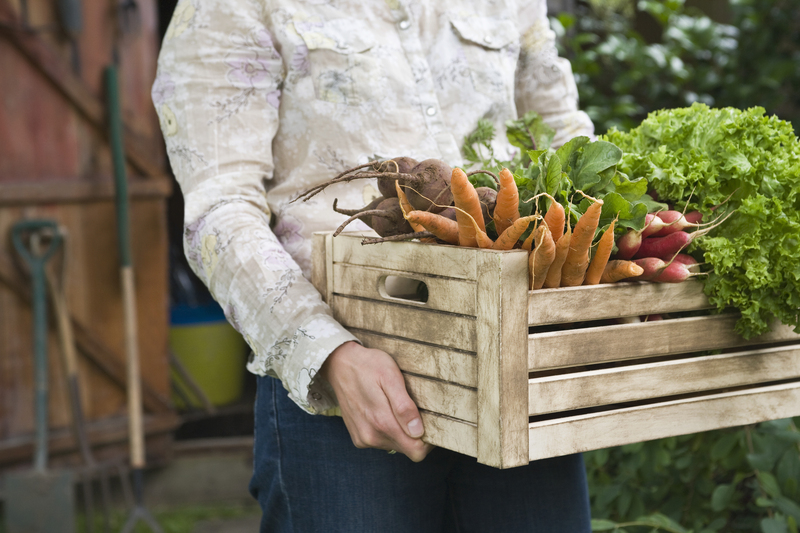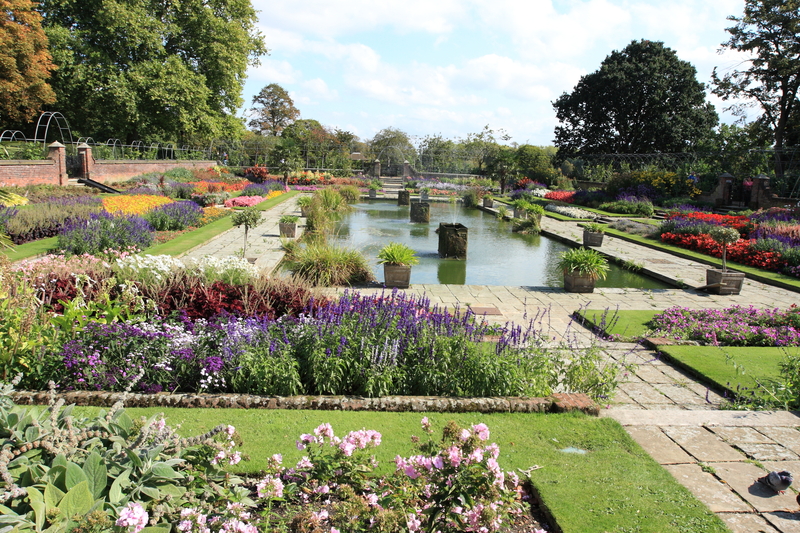Building a Friendly and Secure Garden Environment for Kids
Posted on 31/08/2025
Building a Friendly and Secure Garden Environment for Kids
A garden is more than just a space to grow plants--it's a perfect outdoor haven for children to play, learn, and connect with nature. However, cultivating a kid-friendly and secure garden environment requires thoughtful planning, safety features, and engaging elements. In this comprehensive guide, we'll explore how to create a safe, fun, and inviting garden space for children, ensuring their wellbeing while encouraging their creativity and curiosity.

Why Every Family Needs a Secure and Playful Garden for Kids
Children flourish when provided with a nurturing environment that stimulates exploration and growth. By intentionally designing family-friendly outdoor spaces, parents and guardians can support physical activity, learning, and imaginative play--all while maintaining peace of mind regarding safety. A well-crafted kids' garden environment also encourages healthy habits, cultivates a love for nature, and creates lasting family memories.
The Benefits of Outdoor Play in a Safe Garden
- Physical Health: Activity-rich gardens help improve children's strength, balance, and overall fitness.
- Mental Well-being: Being in a secure outdoor setting reduces stress and encourages mindfulness.
- Creativity and Learning: Gardening and nature exploration stimulate curiosity and hands-on learning.
- Social Skills: Shared garden tasks and games foster teamwork and communication.
Planning Your Kid-Safe and Friendly Garden Space
To build a secure and child-friendly garden environment, begin by shaping the layout and choosing the right features. Consider these key steps in your planning process:
1. Evaluate the Garden Area
- Assess Safety Risks: Identify potential hazards, such as sharp edges, unstable structures, thorny plants, and toxic vegetation.
- Accessibility: Ensure pathways and entry points are easy to navigate for different age groups, including toddlers.
- Visibility: Maintain clear sightlines from the house or main gathering points so adults can supervise children easily.
2. Design Zones with Purpose
Create distinct areas dedicated to different activities. These zones will simplify supervision and help kids enjoy a range of experiences while staying safe.
- Active Play: Grass lawns, play equipment, or sandpits.
- Learning & Gardening: Raised beds or small vegetable patches for budding gardeners.
- Relaxation: Seating nooks or shaded areas for rest and reading.
3. Select Safe Materials and Surfaces
Opt for soft and slip-resistant materials, such as rubber mulch, artificial grass, or bark chips, especially for high-traffic and play areas. Avoid gravel, sharp stones, or concrete surfaces near active play spots.
Top Tips for Creating a Child-Safe Garden Environment
Fencing and Boundaries
- Secure Perimeter: Ensure your garden is fully enclosed with a sturdy, child-proof fence to prevent children from wandering off and to keep unwanted visitors out.
- Safe Gates: Use lockable gates; ensure latches are out of reach for young children.
- Screening: Avoid gaps underneath fences where small children or pets could squeeze through.
Choosing Child-Friendly Plants
- Avoid Toxic Plants: Some common garden plants can be dangerous if ingested. Examples to avoid include foxglove, oleander, lily of the valley, and monkshood.
- Opt for Edible and Sensory Plants: Strawberries, sunflowers, lavender, mint, and nasturtiums are safe and engaging.
- Low-Allergen Choices: Choose non-allergenic, non-spiky plants where possible to prevent allergies and injuries.
Safe Storage for Tools and Chemicals
- Lock Sheds and Cabinets: Store garden tools, fertilizers, and pesticides out of reach and under lock and key.
- Maintain Clear Labelling: Always keep chemical products in original containers with warning information visible.
- Regular Inspections: Frequently check for stray sharp tools or broken equipment in the play area.
Water Safety in the Garden
- Supervise At All Times: Never leave children unattended near ponds, fountains, or water features.
- Cover or Fence: Cover water areas with tough mesh or install low fencing to limit access.
- Avoid Deep Water: Opt for shallow splash zones or use water tables for younger children.
Engaging Features for a Fun and Inviting Garden Space
A friendly garden for kids goes beyond safety--it should also spark joy and imagination. Here are creative ideas to turn your backyard into a magical world for children:
Incorporate Play Structures
- Swings: Install sturdy swings with soft landing surfaces below.
- Slides and Climbing Frames: Choose age-appropriate structures and anchor them securely to the ground.
- Sandpits: Add covers to prevent contamination from animals and to keep the sand clean and dry.
Creative Outdoor Learning Zones
- Mini Veggie Gardens: Set up raised beds where kids can grow and harvest their own fruits and vegetables.
- Bug Hotels and Bird Feeders: Encourage wildlife observation and nurture curiosity about nature.
- Nature Art Stations: Create areas equipped with natural materials for making art, fairy houses, or mud pies.
Shaded Retreats and Rest Spots
- Plant Trees or Install Pergolas: Give children a break from the sun during hot periods.
- Outdoor reading nooks: Place comfortable seating and cushions for quiet moments.
Pathways and Secret Trails
- Winding Paths: Use stepping stones to create trails that invite exploration and imaginative games.
- Mazes and Tunnels: Willow tunnels or hedge mazes can add playful adventure elements.
Maintaining a Secure Garden Environment for Kids
A safe and kid-friendly backyard requires ongoing maintenance to ensure it stays inviting and hazard-free. These garden safety tips can help:
Regular Safety Checks and Repairs
- Inspect Play Equipment: Routinely check for loose bolts, splinters, rust, or broken pieces.
- Monitor Plant Growth: Remove invasive species or overly vigorous plants that could cause allergies or accidents.
- Watch for Holes and Trip Hazards: Fill in animal burrows or eroded pathways promptly.
Seasonal Considerations
- Winter: Store or cover slides, swings, and other outdoor toys to prevent weather damage.
- Summer: Check for wasp nests, bee activity, and increase shade provision.
- All Year: Keep play areas clear of fallen branches, slippery leaves, and debris.
Sun Safety in the Kids' Garden
- Install Shade: Use umbrellas, sails, or fast-growing trees for UV protection.
- Encourage Hats and Sunscreen: Teach children to wear hats and reapply sunscreen when playing outdoors.
Teaching Kids About Garden Safety and Responsibility
Empowering children with knowledge about garden safety fosters independence and responsibility. Involve them in the rules and routines of keeping the space secure:
- Safe Tool Use: Train older kids to use basic gardening tools correctly under supervision.
- Understanding Boundaries: Establish clear rules about which areas are off-limits without adult supervision, such as ponds or sheds.
- Respect for Nature: Teach children to be gentle with plants and wildlife.
- Emergency Knowledge: Make sure kids know how to seek help if needed and where first aid supplies are kept.

Common Mistakes To Avoid When Making a Garden Kid-Friendly
Even with the best intentions, certain oversights can compromise your garden's safety and child-friendliness:
- Overloading with Equipment: Cramming in too many features can leave little room for open play and increase accident risks.
- Ignoring Age Appropriateness: Tailor installations and plants to the ages and abilities of your children.
- Neglecting Allergies: Always consider pollen, bee activity, and plant allergies when choosing what to plant.
- Poor Drainage: Waterlogged soils can become hazardous, especially for young children. Ensure proper garden drainage.
Conclusion: Creating a Safe and Enjoyable Garden for Children
Crafting a friendly and secure garden for kids is a rewarding project that enhances your children's wellbeing and connects your family with the outdoors. By combining safety measures, sensory-rich features, and spaces for active and calm play, your garden can become a cherished environment for growth and exploration. With ongoing supervision and seasonal adjustments, your child-friendly garden will thrive year after year--offering countless joys and a safe haven for childhood memories.
With a little planning and imagination, your garden will not just be safe--it will become a magical world where your kids can learn, play, and flourish.



